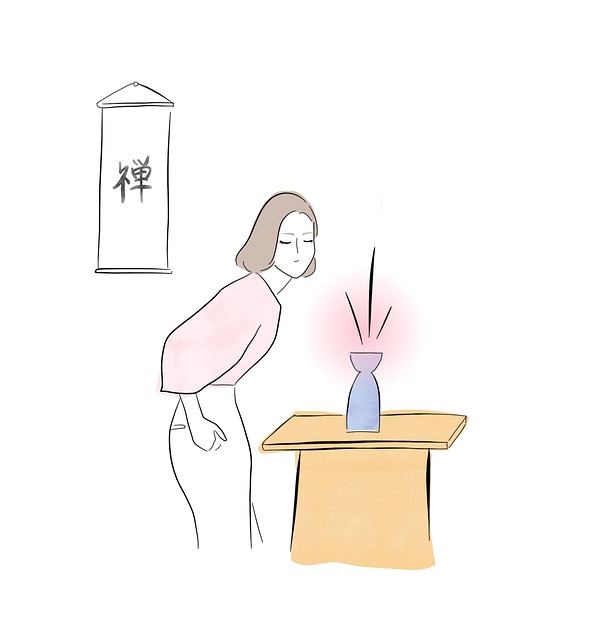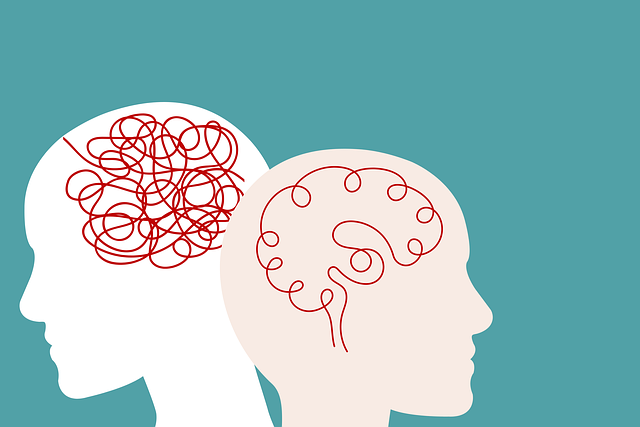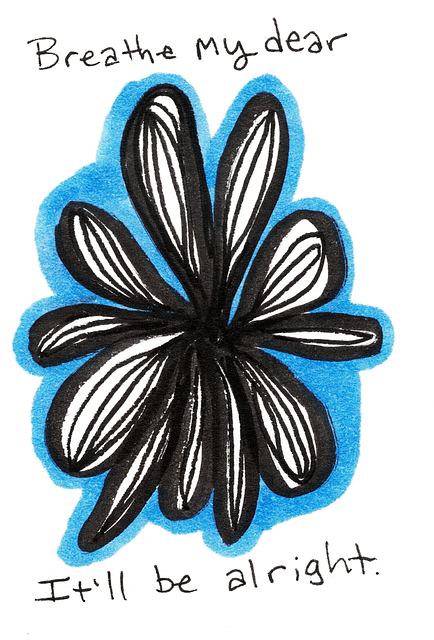Resilience is crucial for adolescent teens facing phobias, self-esteem issues, and social anxiety. The RFM (Risk, Resilience, Maladaptive Coping) framework guides therapists in supporting teens through targeted interventions like social skills training and cognitive-behavioral therapy. Early recognition and stigma reduction through public awareness campaigns make therapy more accessible. Specialized observation is needed to identify phobias, as adolescents express anxiety uniquely. Risk management planning, including burnout prevention strategies, is vital for effective treatment. Tailored resilience-building exercises, combining exposure therapy and mindfulness, significantly enhance coping mechanisms. Implementing RFM in clinical settings involves structured assessment, education, flexibility promotion, and goal-setting. Measuring success through metrics capturing immediate and sustained behavioral changes ensures the effectiveness of these programs. Compassion cultivation practices prevent burnout and equip teens with lifelong tools for stress navigation.
“Unleashing resilience is a transformative journey for adolescent teens grappling with phobias. This article delves into the powerful tool of RFM (Risk, Function, and Meaning), pivotal in adolescent therapy. We explore how understanding risk factors and their underlying meaning can help identify specific phobias.
Through practical steps, we guide therapists in designing tailored resilience-building exercises for effective intervention. Learn a step-by-step process for implementing RFM in clinical settings, measuring success, and fostering long-term wellbeing for teens facing these challenges.”
- Understanding RFM and Its Role in Adolescent Therapy
- Identifying Phobias in Teens: Common and Unique Presentations
- Designing Resilience-Building Exercises for Effective Intervention
- Implementing RFM in Clinical Settings: A Step-by-Step Guide
- Measuring Success and Long-Term Impact on Teen Wellbeing
Understanding RFM and Its Role in Adolescent Therapy

Resilience is a vital asset for adolescent teens navigating life’s challenges and overcoming fears. Understanding RFM (Risk, Resilience, and Maladaptive Coping) provides a framework for therapists to support young individuals in building resilience. This approach recognizes that adolescents, often dealing with intensifying emotions and new experiences, may exhibit maladaptive coping strategies when facing stress or traumatic events.
By focusing on risk factors and identifying resilient strengths, therapists can tailor therapy for adolescent teens with phobias, self-esteem issues, and social anxiety. RFM analysis enables the development of targeted interventions, such as social skills training, to enhance coping mechanisms and foster a sense of empowerment. Public awareness campaigns around mental health play a crucial role in encouraging open discussions, reducing stigma, and promoting the early recognition of fears and phobias in teens.
Identifying Phobias in Teens: Common and Unique Presentations

Identifying phobias in teenaged individuals is a nuanced task that requires careful observation and specialized knowledge. While common phobias like arachnophobia (fear of spiders) or acrophobia (fear of heights) may manifest clearly, many adolescents express their anxiety through unique behaviors and presentations. These can include extreme avoidance of social situations, school refusal, or even peculiar fixation on specific objects or themes. Mental health professionals must be adept at recognizing these subtle cues to initiate appropriate therapy for adolescent teens phobias.
Risk management planning for mental health professionals plays a crucial role in addressing teen phobias. By integrating burnout prevention strategies for healthcare providers, such as self-care practices and compassionate cultivation techniques, therapists can create a supportive environment that encourages exploration and healing. These compassion cultivation practices not only mitigate the risk of professional burnout but also foster an atmosphere of safety and trust necessary for effective treatment.
Designing Resilience-Building Exercises for Effective Intervention

Resilience-building exercises tailored for adolescent teens facing phobias are instrumental in enhancing their coping mechanisms and overall well-being. These exercises should be designed to engage and empower young individuals, fostering an environment where they can confront and manage their fears gradually. A combination of cognitive-behavioral therapy techniques, exposure therapy, and mindfulness practices has proven effective in treating specific phobias. For instance, gradual exposure to the feared object or situation in a safe and controlled manner helps adolescents confront their phobias head-on, promoting positive behavioral changes.
When implementing these exercises, therapists must consider the unique needs and developmental stages of adolescent teens. Incorporating interactive activities, group discussions, and creative expression techniques can make therapy more engaging and accessible. Additionally, integrating stress reduction methods, mood management strategies, and burnout prevention techniques for healthcare providers involved in the process ensures a holistic approach to resilience building. This comprehensive method not only addresses the adolescent’s current challenges but also equips them with lifelong tools to navigate future stressors effectively.
Implementing RFM in Clinical Settings: A Step-by-Step Guide

Implementing RFM (Resilience, Flexibility, and Mastery) in clinical settings for therapy among adolescent teens with phobias involves a structured approach to enhance their coping mechanisms and overall resilience. Here’s a step-by-step guide:
1. Assess Individual Needs: Begin by understanding each teen’s unique fears and triggers. This lays the foundation for tailoring RFM exercises to address specific phobias effectively. Therapy for adolescent teens with phobias often involves identifying the sources of anxiety, whether it’s arachnophobia, agoraphobia, or social phobia.
2. Educate on Resilience: Teach adolescents about resilience as a key component in managing phobias. Explain how building emotional resilience enables them to face and overcome challenges. This can involve discussing real-life examples of individuals who have successfully navigated similar fears.
3. Promote Flexibility: Introduce Stress Reduction Methods such as deep breathing exercises, mindfulness, and progressive muscle relaxation. These techniques empower teens to manage anxiety symptoms during triggering situations. Additionally, teaching Conflict Resolution Techniques helps them navigate difficult interactions with a calmer mindset, reducing the impact of stressors.
4. Foster Mastery: Encourage a sense of control by involving adolescents in setting achievable goals and gradually exposing them to feared situations in a safe environment. This step-by-step exposure therapy, combined with positive reinforcement, builds confidence and reduces anxiety over time. The goal is for teens to gain mastery over their phobias, leading to improved Anxiety Relief.
Measuring Success and Long-Term Impact on Teen Wellbeing

Measuring success and gauging the long-term impact of resilience-building exercises among adolescent teens is paramount in understanding the effectiveness of interventions aimed at supporting their wellbeing, particularly in therapy for adolescent teens with phobias. By integrating metrics that capture both immediate outcomes and sustained behavioral changes, mental health professionals can assess the true value of these programs. This includes tracking improvements in coping strategies, reduced symptoms of anxiety or depression, enhanced social interactions, and increased overall life satisfaction over time.
Incorporating compassion cultivation practices into risk management planning for mental health professionals is a strategic approach to mitigating burnout prevention while fostering a supportive environment for teens. Such exercises not only contribute to the resilience-building process but also empower adolescents with tools to navigate challenges beyond the therapy setting, potentially leading to improved mental health outcomes in the long run.
The implementation of RFM (Resilience, Flexibility, and Mastery) exercises in adolescent therapy offers a comprehensive approach to addressing phobias and enhancing overall teen wellbeing. By understanding the unique presentations of specific phobias in teens and designing tailored interventions, clinical professionals can empower young individuals to navigate life’s challenges with greater resilience. The step-by-step guide provided ensures effective integration of RFM into clinical settings, allowing for measurable improvements in mental health outcomes for adolescent teens struggling with phobias.














